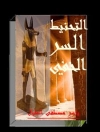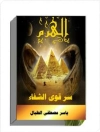In the popular imagination, the Middle Ages are often associated with lawlessness. As historians have long recognized, however, medieval culture was characterized by an enormous respect for law, legal procedure, and the ideals of justice and equity. Many of our most important modern institutions and legal conceptions grew out of medieval law in its myriad forms (Roman, canon, common, customary, and feudal).
Institutional structures represent only a small portion of the wider cultural field affected by—and affecting—law. In Law and the Illicit in Medieval Europe such distinguished scholars as Patrick Geary, William Chester Jordan, R. I. Moore, Edward M. Peters, and Susan Mosher Stuard make the case that the development of law is deeply implicated in the growth of medieval theology and Christian doctrine; the construction of discourses on sin, human nature, honor, and virtue; the multiplying forms governing chivalry, demeanor, and social interaction, including gender relations; and the evolution of scholasticism, from its institutional context within the university to its forms of presentation, argumentation, and proof.
Содержание
Preface
Introduction: The Reordering of Law and the Illicit in Eleventh- and Twelfth-Century Europe
—Edward M. Peters
PART I: LEGAL SYSTEMS
Chapter 1: A Fresh Look at Medieval Sanctuary
—William Chester Jordan
Chapter 2: Heresy as Politics and the Politics of Heresy, 1022-1180
—R. I. Moore
Chapter 3: Legal Ethics: A Medieval Ghost Story
—James Brundage
Chapter 4: The Ties That Bind: Legal Status and Imperial Power
—James Muldoon
PART II: WRITING THE LAW
Chapter 5: Licit and Illicit in the Yarnall Collection at the University of Pennsylvania: Pages from the Decretals of Pope Gregory IX
—Robert Somerville
Chapter 6: Judicial Violence and Torture in the Carolingian Empire
—Patrick Geary
Chapter 7: The Ambiguity of Treason in Anglo-Norman-French Law, c. 1150-c. 1250
—Stephen D. White
Chapter 8: Illicit Religion: The Case of Friar Matthew Grabow, O.P.
—John Van Engen
Chapter 9: Marriage, Concubinage, and the Law
—Ruth Mazo Karras
PART III: CASES AND TRIALS
Chapter 10: Crusaders’ Rights Revisited: The Use and Abuse of Crusader Privileges in Early Thirteenth-Century France
—Jessalynn Bird
Chapter 11: Learned Opinion and Royal Justice: The Role of Paris Masters of Theology During the Reign of Philip the Fair
—William J. Courtenay
Chapter 12: Coin and Punishment in Medieval Venice
—Alan M. Stahl
PART IV: LAW BEYOND THE LAW
Chapter 13: Licit and Illicit in the Rhetoric of the Investiture Conflict
—Alex Novikoff
Chapter 14: Satisfying the Laws: The Legenda of Maria of Venice
—Susan Mosher Stuard
Chapter 15: Canon Law and Chaucer on Licit and Illicit Magic
—Henry Ansgar Kelly
Chapter 16: Law and Science: Constructing a Border Between Licit and Illicit Knowledge in the Writings of Nicole Oresme
—Joel Kaye
List of Abbreviations
Notes
List of Contributors
Index
Acknowledgments
Об авторе
Ruth Mazo Karras is Professor of History at the University of Minnesota and author of From Boys to Men: Formations of Masculinity in Later Medieval Europe, also published by the University of Pennsylvania Press. Joel Kaye is Professor of History at Barnard College and author of Economy and Nature in the Fourteenth Century: Money, Market Exchange, and the Emergence of Scientific Thought. E. Ann Matter is the William R. Kenan, Jr. Professor of Religious Studies at the University of Pennsylvania. She is the author of The Voice of My Beloved: The Song of Songs in Western Medieval Christianity, also published by the University of Pennsylvania Press.












